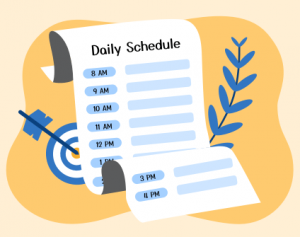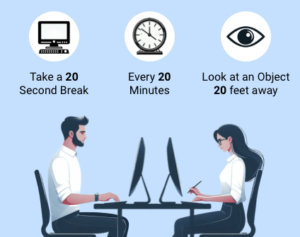Establishing a daily schedule is a simple and effective way to manage your time. It provides structure to your day and increases productivity. You can create a basic schedule on paper, but it’s advisable to use a mobile app or other software tools. This approach allows you to make frequent changes, track your progress, and collaborate with others.
Managing a list of tasks can be overwhelming, especially if you’re uncertain where to start or tend to procrastinate. Utilize the following tips to help you refine your time management skills and shield yourself from burnout.
The Evolution of Scheduling
The practice of scheduling has a rich history that extends back to ancient civilizations. The Babylonians and Egyptians used early forms of schedules to plan their farming activities and coordinate religious rituals based on lunar and solar calendars. The Middle Ages introduced the invention of mechanical clocks, offering a new level of precision and consistency to timekeeping. During the Industrial Revolution, scheduling became even more vital as structured work environments demanded punctuality and organization.
Today, with the advancement of technology, scheduling has adapted to the demands of the 21st century. We have access to a wide range of digital tools and applications that make planning and managing our daily routines more accessible and flexible. In this fast-paced world, effective scheduling remains an essential skill, enabling us to strike a balance between productivity and personal life.

How to Make a Daily Schedule
Building a To-Do List
Creating a to-do list is a practical method that can raise your productivity and goal achievement. By structuring a list of tasks and objectives, you gain clarity on your priorities and stay focused on what truly matters. This organization method ensures nothing is overlooked, enabling you to manage your work effectively and meet deadlines without stress. A well-constructed to-do list helps you manage your time by allocating resources efficiently and preventing over-commitment. Listing tasks clears your mind and relieves anxiety, allowing you to focus better on task execution.
Tips to Create an Effective Task List:

Prioritize Tasks
Prioritizing your tasks is an essential step towards making your list more manageable and focusing on what matters. Prioritization provides a clear view of what to address next and when enabling you to concentrate on high-impact activities. To prioritize effectively, categorize your tasks as critical, high, medium, or low priority.
Here are some questions to help you make these distinctions:
– Which tasks have flexible deadlines that can be delayed without consequences?
– What tasks have the potential to make the most significant impact on your goals or projects?
– Are there tasks that are dependent on others being completed first?
– Can certain tasks be delegated to others?
– Which tasks are you most motivated to handle right now?

Set Deadlines and Reminders
Helpful task management doesn’t stop at prioritization. To optimize your time, it’s essential to set approximate deadlines for your tasks. While precision isn’t always necessary, these deadlines provide clarity about task importance and your work capacity. If you’re uncertain about a specific deadline, consider setting a primary one and reviewing it later. Ensuring that each task on your to-do list has a defined timeframe fosters organization and creates a clear daily roadmap.
Incorporating recurring reminders into your routine is invaluable. These reminders are particularly beneficial for tasks that repeat regularly in your daily life. By diligently tracking your time, you can allocate your hours more effectively and consistently meet your deadlines. It not only reduces the risk of forgetting essential tasks and responsibilities, especially in times of overwhelm but also cultivates habits that make managing your schedule more mentally manageable.

Adapting to Change
When it comes to efficient time management, the ability to handle and adapt to changes is of paramount importance. Once you thoroughly understand your daily plan, it’s time to begin your work. It’s crucial to keep in mind that your schedule can change during the day due to deadlines, and sometimes you may need to reschedule your weekly appointments or meetings.

To simplify dealing with these unexpected changes, consider eliminating less essential tasks from your schedule. It will provide more flexibility for tasks that might require more time than initially anticipated. Using a scheduling app can assist you in quickly and effortlessly adjusting your plan with just a tap, reducing the stress associated with staying on top of your responsibilities, which can evolve throughout the day.
It’s essential to experiment with various approaches to find the routine that suits you best. By trying out different methods, you can discover the most effective way to manage your time. A good schedule helps you succeed and balance your life. It’s like a reliable guide on your path to personal and professional goals.




